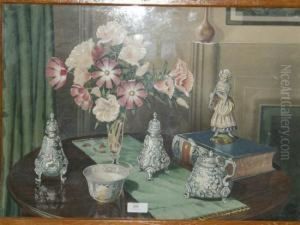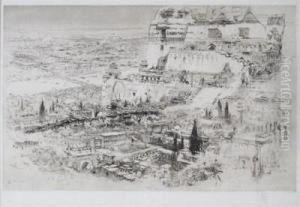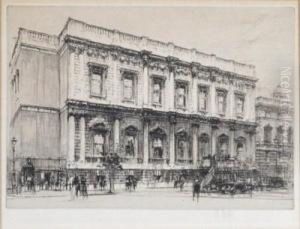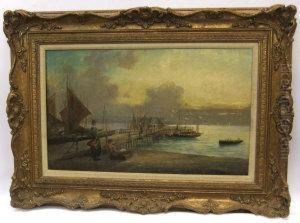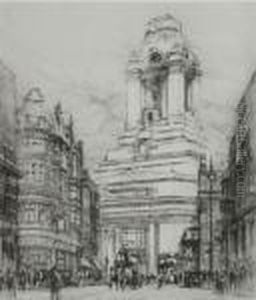William Walcott British Paintings
Sir William Walcott was a prominent British architect, etcher, and printmaker, known for his architectural etchings that captured the essence of European cities and landscapes during the late 19th and early 20th centuries. Born on 10 January 1874 in Agra, India, where his father was a surgeon in the Indian army, Walcott was exposed to a variety of cultural influences from a young age. He was sent back to Britain for his education, studying architecture at the South Kensington Art School in London.
Walcott's architectural training deeply influenced his artistic career. He practiced as an architect for a short period before turning to etching and graphic arts. His architectural background is evident in his work, which often features detailed and accurate representations of buildings, combined with a romantic and expressive quality that captures the spirit of the place. He was particularly noted for his ability to depict the texture and atmosphere of ancient or picturesque buildings and urban scenes.
During his lifetime, Walcott traveled extensively throughout Europe, capturing the architecture and street scenes of cities such as Venice, Paris, and Edinburgh in his etchings. He was adept at using light and shadow to create depth and mood in his compositions. His work was well received, and he became a prominent figure in the British art scene. Walcott was a member of the Royal Society of Painter-Etchers and Engravers, and his work was exhibited widely, including at the Royal Academy in London.
Walcott was also involved in several significant art organizations. He served as the President of the Royal Society of British Artists from 1923 to 1926 and was knighted in 1926 for his contributions to art. His legacy includes a vast number of etchings that continue to be appreciated for their artistic skill and historical value, providing a window into the urban and rural environments of early 20th-century Europe.
Sir William Walcott passed away on 21 October 1943. His works remain in numerous collections, including the British Museum and the Victoria and Albert Museum in London, and are studied and admired for their unique blend of architectural precision and artistic interpretation.
